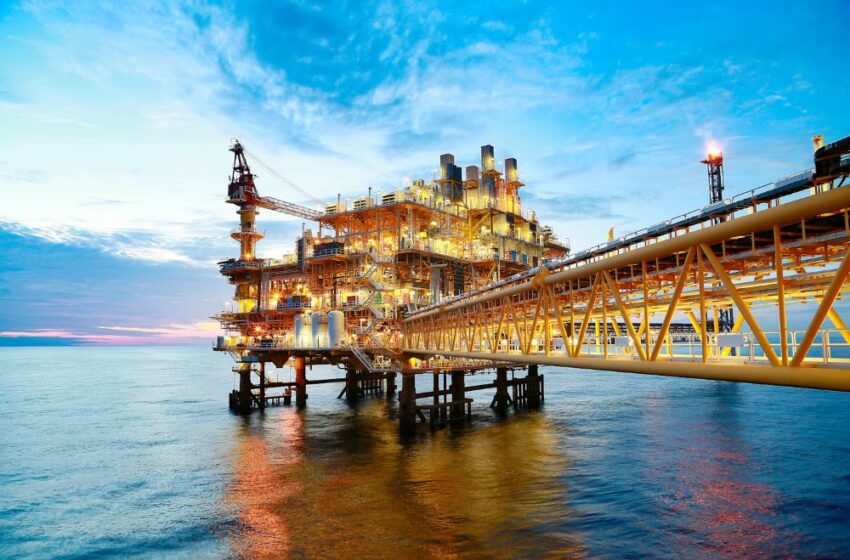
SEA’s Offshore Gas Production Can Unlock $100 Billion Potential
Driven by a flurry of planned final investment decisions (FIDs) which are expected to materialise by 2028, offshore gas production in Southeast Asia is poised to unlock a $100 billion potential, Rystad Energy’s latest analysis showed.
This represents a more than twofold increase over the $45 billion worth of developments that reached FID from 2014 to 2023 and signals a surge for the region’s offshore gas industry. The upcoming period of rapid growth is bolstered by deep-water projects, recent successful discoveries in Indonesia and Malaysia, and positive carbon capture and storage (CCS) advancements, which will be crucial in meeting the region’s sanctioning agenda in the years ahead, the analysis said.
Global oil and gas majors are expected to drive 25% of these planned investments through 2028, while national oil companies (NOCs) will account for a 31% share. Notably, East Asia’s upstream companies are emerging with a 15% share and show potential for growth through their focus on mergers and acquisition (M&A) opportunities and upcoming exploration ventures. The role of majors could further expand to 27% following TotalEnergies’ substantial acquisition efforts in Malaysia.
Discussions among Southeast Asian countries have focused on the future of domestic developments and limiting their dependence on gas imports. Energy security and the transition to gas as a fuel have become growing concerns for governments in the region.
To address the energy trilemma – balancing energy security, energy equity and environmental sustainability – countries can prioritize utilizing domestic resources for gas development while crafting policies and incentives that promote sustainable practices and enhance regional energy security.
Despite the region’s promising future for offshore gas development, persistent project delays remain a concern. Deepwater and sour gas economics, infrastructure readiness and regional politics have caused widespread delays, some of which have been ongoing for over two decades.
However, the emergence of CCS hubs in Malaysia and Indonesia could be a game-changer. The high carbon dioxide (CO2) content in upcoming offshore projects necessitates CCS for financing and regulatory compliance.
Furthermore, both countries are exploring depleted reservoirs from mature fields as potential CO2 storage sites. The growing recognition of these reservoirs’ potential, combined with the pressing need for emissions reductions, is significantly boosting demand for CO2 storage and fuelling a surge in offshore gas development expected from 2025 onwards.
Surge in New Investments
Rystad Energy recognises the potential of new project investments and capital commitments in the region, which surged from $9.5 billion in 2022-2023 to approximately $30 billion in 2024-25. As we delve deeper into the data, it becomes increasingly clear that this upward trajectory is projected to continue until 2028.
“Recent discoveries and the involvement of NOCs will play a vital role in this growth, particularly in deep-water developments, which are pivotal in determining how much of this anticipated $100 billion boom can be realised,” Prateek Pandey, Vice President of Upstream Research, Rystad Energy, said.
In only looking at forecasts for sanctioned investments between two leading nations in the region, Indonesia and Malaysia, the former stands out with expectations to accelerate its offshore gas activities.
This is driven by major projects such as the Inpex-operate Abadi LNG, Eni’s Indonesia Deepwater Development (IDD) and BP’s Tangguh Ubadari Carbon Capture (UCC). These initiatives, along with recent discoveries in the East Kalimantan and Andaman provinces, are projected to account for 75% of Indonesia’s total offshore gas investments slated for FID.
Indonesia also anticipates the increased FID activity starting in 2025, bolstered by major projects spearheaded by global players like BP and Eni. Malaysia’s upcoming FID projects underscore significant discoveries made since 2020, primarily managed by Petronas, PTTEP and Shell.
Gas Sector
The region’s gas sector anticipates substantial growth, with projected gas resources from FIDs set to rise to 58 trillion cubic feet (Tcf) by 2028, marking a three-fold increase from levels observed in the past 5 years, 2019-2024.
This growth hinges on efficiently monetizing recent discoveries and advancing delayed developments. Despite a favourable investment climate, operators face economic challenges, particularly in deep-water and sour gas ventures.
The analysis indicates that many projects require gas prices above historical averages of $4 per thousand cubic feet to achieve profitability, with an optimal threshold closer to $6 per thousand cubic feet.
These economic realities have sparked discussions on revising domestic gas pricing policies across the region. Notably, a gas price of $7.5 per thousand cubic feet could potentially make up to 95% of planned developments economically viable, especially those associated with LNG projects in Indonesia and domestic supply initiatives in Vietnam.















